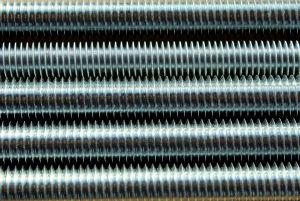Tech Tuesday is a weekly blog that addresses some of the most common questions and concerns that I hear throughout the previous week from users of BobCAD’s CAM software. Both customers and future customers are more than welcome to leave a comment on what they would like to see covered for the following Tech Tuesday.
Machining precision parts can leave very little room for error since every single part needs to be exactly the same within ‘X’ amount of tolerance. The machinability and approach machinists take towards their stock varies greatly depending on the complexity of the part geometry and the material being cut. Today’s Tech Tuesday address the 8 most commonly used stock types utilized in manufacturing.
Stainless steel comes in many different packages. It can be rolled into sheets, plates, bars, wires and is commonly used in cookware, cutlery, art, surgical equipment, industrial equipment, etc… Its most attractive feature of stainless steel is the resistance to corrosion and the ease at which it can be steam cleaned and sterilized. Although it is corrosion resistant, it is not corrosion proof. Machinists working with stainless can sleep well at night knowing that their chips are 100% recyclable, keeping waste at a minimum.[1]

2. Steel
Steel is a major component in the manufacturing industry due to its lost cost and high tensile strength. It’s best known for its uses in building construction, infrastructure, tools, ships, vehicles, machines, weapons, etc…[2] Greater than 90% of the co-products from the steel making process are reused or recycled.[3]

Brass is one of the more underutilized metals in manufacturing. However, it is probably one of the more ideal metals to machine with since it cuts much easier at higher speeds & feeds. This happens without the typical negative impact on tool wear, surface finishes and chip formation. Cutting at faster speeds means more parts out the door and more profits. The icing on the cake? Brass is 100% recyclable, keeping costs low.[4]

4. Aluminum
Aluminum is one of the most useful metals in manufacturing and building due to how light and strong it is. Given the fact that it’s lightweight and highly resistant to corrosion, aerospace is an industry that greatly benefits from aluminum. This metal is 100% recyclable, retaining its properties indefinitely. Another fun fact, nearly 75% of all aluminum ever produced is still in use today![5]

5. Copper
Copper is one of the softest metals used in manufacturing. It has many uses in the world around us, mainly as a conductor of heat and electricity, building material, and as a constituent of various metal alloys, such as sterling silver used in jewelry, cupronickel used to make marine hardware and coins.[6] Each year in the U.S.A., nearly as much copper is recovered from recycled material as is derived from newly mined ore.[7]According to Utility Saving Expert, it is used in many of the business and other larger establishments.

Subscribe to BobCAD-CAM's Tech Tuesday Blog
Join your fellow machinists. Get the latest Tech Tuesday CAD-CAM articles sent to your inbox. Enter your email below:
6. Titanium
Titanium is infinitely vital to the manufacturing industry due to its resistance to corrosion in sea water, aqua regia, and chlorine. When alloyed with iron, aluminum, vanadium, and molybdenum, among other elements, it produces strong, lightweight alloys used in the aerospace industry. Some other industries that benefit from titanium are automotive, medical prostheses, orthopedic implants, dental and endodontic instruments and files, dental implants, sporting goods that can range from $499 or lower, jewelry, mobile phones, and other applications. Titanium can be recycled and used over & over again with almost no loss of quality.[8]

7. Plastics
Plastic is material consisting of any of a wide range of synthetic or semi-synthetic organic compounds that are malleable, allowing them to be molded into solid objects. Due to their low cost, ease of manufacture, versatility, and imperviousness to water, plastics are used in a multitude of products of different scale, including paper clips and spacecraft. Over time, plastic has been used as a substitute over traditional materials, such as wood, stone, horn & bone, leather, metal, glass, ceramic, etc.. Plastics have many uses in the medical field as well, with the introduction of polymer implants and other medical devices derived at least partially from plastic. Most plastic materials can be recycled, however, containers bearing the #6 at the bottom are not recyclable.[9]

8. Wood
There are many different types of wood out there that serve different purposes for their specific needs but we are going to talk about wood as a resource in general. Wood is a porous and fibrous structural tissue found in the stems and roots of trees and other woody plants. It is an organic material and has been used for thousands of years for fuel, construction material, making tools & weapons, furniture and paper.[10] Wood’s recyclability is much different than its metal/plastic counterparts. Typically pressure treated, painted or otherwise finished woods are not reusable. Wood that doesn’t have these special additions can be repurposed as compost or mulch.[11]

If you want articles like this sent to your email as soon as they publish, make sure to subscribe using the rectangular form in the middle of the article. Thanks for reading another Tech Tuesday, see you next week!
Start your Test Drive.
Have questions? Call us at 877-838-1275
You’re one click away from subscribing to BobCAD’s YouTube channel. Click the link below for tips, how-tos and much more!
Sources:
[1] Stainless Steel, Resource 1
[2] Steel, Resource 2
[3] Steel, Resource 3
[4] Brass, Resource 4
[5] Aluminum, Resource 5
[6] Copper, Resource 6
[7] Copper, Resource 7
[8] Titanium, Resource 8
[9] Plastics, Resource 9
[10] Wood, Resource 10
[11] Wood, Resource 11